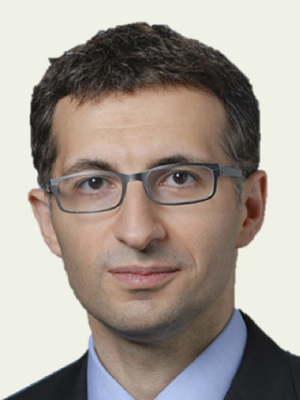For bicuspid aortic valve (BAV) patients, a classification framework assessing the risk of transcatheter aortic valve replacement (TAVR) can guide practice and push the field forward, an expert said.
 Hasan Jilaihawi, MD (New York University Langone Health, New York, USA) explained how classifying BAVs according to morphology could help tailor TAV-in-BAV strategy and improve outcomes at the 27th TCTAP 2022 on Apr 27.
Hasan Jilaihawi, MD (New York University Langone Health, New York, USA) explained how classifying BAVs according to morphology could help tailor TAV-in-BAV strategy and improve outcomes at the 27th TCTAP 2022 on Apr 27.
“The BAV classification framework is highly relevant for assessing morphological features,” Jilaihawi said. “At NYU Langone, cardiologists adopt this framework routinely to debate the imaging result and assess whether patients belong to a TAVR risk category.”
Jilaihawi pointed to the BAV classification framework developed by Sung-han Yoon, MD (Cedars-Sinai Medical Center, California, USA) and colleagues that employ CT-based assessment to group valve morphology into low, intermediate or high TAVR risk tiers.
Studies on the framework showed that valve morphologies like calcified raphe and excess leaflet calcification were significantly associated with higher complications and all-cause mortality rates.
Particularly, BAV patients at low SAVR-risk with both calcified raphe and excess leaflet calcification had higher rates of moderate to more severe paravalvular leak (5.6% vs. 1.8%, p=0.002), aortic root injury (6.1% vs. 1.2%, p<0.001), major vascular complications (7.6% vs. 3.6%, p=0.006), and 30-day mortality (3.8% vs 0.6%, p=0.004).
“We can further compare this data to computed tomography (CT)-based TAVR risk scores to determine the likelihood of immediate suboptimal outcomes,” Jilaihawi said. “The general rule is to opt-out of TAVR if the TAVR risk exceeds SAVR risk, but concrete strategies for each TAVR risk group warrant further exploration.”
High TAVR risk: modified sizing
For BAV patients at high TAVR risk, Jilaihawi noted most data comes from China, where treatment of high-risk anatomies with TAVR is more common.
A study by Yuan Wang, MD (Fuwai Hospital, Beijing, China) and colleagues showed systematic downsizing helped improve optimal annulus sizing and prosthesis choice for BAVs:
In addition to routine downsizing, the modified Hangzhou solution pioneered by Jian-an Wang, MD, PhD (The Second Affiliated Hospital of Zhejiang University, Hangzhou, China) was also frequently utilized as a supra-annular structure-based sizing strategy to help device size selection.
High-intermediate TAVR risk: leaflet modification, aortic root tricuspidization
The BASILICA technique pioneered by Danny Dvir, MD (Shaare Zedek Hospital Center, Jerusalem, Israel) is being explored as a systematic strategy for high to intermediate TAVR risk patients, Jilaihawi said.
BASILICA, standing for Bioprosthetic or native Aortic Scallop Intentional Laceration to prevent Iatrogenic Coronary Artery obstruction, is a novel technique that utilizes electrified guidewire to slice aortic valve leaflets into two and ensure circular device expansion with no obstruction.
Despite the immediate success of the procedure, however, concerns related to its long-term durability of TAV-in-BAV patients, particularly intermediate TAVR-risk groups, have called for further study on the characteristics of BAV anatomy likely to benefit from BASLICIA.
Low TAVR risk
For low TAVR risk groups, Jilaihawi challenged the concomitant treatment of the ascending aorta/root for aortic diameter ≥45 mm - a recommendation currently advocated by the 2018 American Association for Thoracic Surgery (AATS) guideline.
“The AATS’ recommendation needs re-evaluation considering the evidence comes from limited retrospective data that showed a higher incidence of subsequent aortic events in BAV patients undergoing AVR with an aortic diameter equal or greater than 45 mm,” Jilaihawi said.
“But most follow-up events comprised of simple replacement of the ascending aorta during elective re-operative AVR surgery; moreover, the incidence of aortic dissection and other post-AVR aortic catastrophes were low, particularly in patients with BAV and AS,” he said. “We need to question whether aorta of 45 mm requires treatment when AS is removed from the equation and leaves only aortopathy.”
Edited by

Junghoon Lee, MD
The Catholic University of Korea, Eunpyeong St. Mary's Hospital, Korea (Republic of)
Written by



